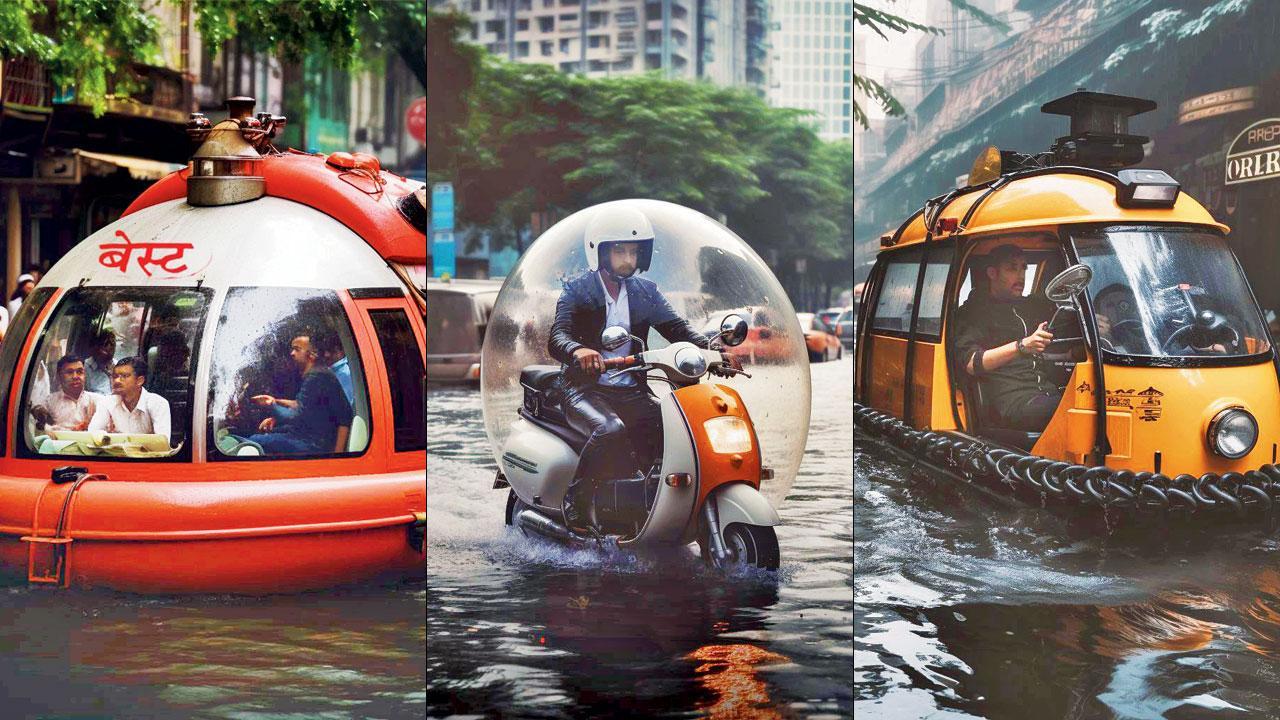Home / Mumbai-guide / Things To Do / Article /
This visual artist reimagines Mumbai through his artwork using AI
Updated On: 05 July, 2023 07:40 AM IST | Mumbai | Devanshi Doshi
Visual artist Manoj Omre, whose AI-made artworks of monsoon-friendly vehicles in the city are currently going viral, shares his visions and motives behind creating an imaginary Mumbai

Stressing on the importance of giving correct prompts, Omre shares that the (from left) BEST bus, scooty and auto rickshaw made on Midjourney initially resembled random boats in the city flood
Manoj Omre (inset) grew up with a vision of a different Mumbai. His imagination was based on movies like Jaane bhi do yaaro and Chhoti si baat, and the postcards that his father brought back home from his first visit to the city.
“But I got acquainted with the real scene when I arrived here six years ago [from Madhya Pradesh’s Khajuraho],” the 29-year-old visual artist chuckles over the phone. “In my opinion, it is a city for the working class. As a person who is not from here, I cannot imagine being old here, or going to a school that is in the middle of an extremely busy lane. But while it’s impossible to find the Mumbai I grew up imagining in the suburbs, I find fragments of the calm in South Mumbai. That said, this city is the best of both worlds — warm people and the metropolitan vibes.”



